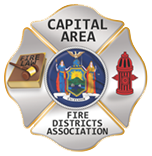By David Quinn and Jerry Deluca
In February 2014, one person died of carbon monoxide poisoning in a Long Island restaurant. The state Legislature acted with the appropriate urgency, and two years later, a law is on the books requiring the installation of CO detectors in all commercial properties. This is an excellent example of public officials taking advantage of existing, widely available technologies to improve the public safety.
Sadly, the state Code Council has not demonstrated the same urgency. For some time now, the council has bowed to pressure from home builders’ associations and resisted the inclusion of residential sprinkler systems in New York’s home building codes. This comes in spite of the fact that sprinklers are proven, life-saving technology, and are integrated into the national standard code. The council has, in fact, actively removed the sprinkler requirement from New York’s code, harming the public safety.
If enacted, the sprinkler requirement would apply only to new one- and two-family homes, as well as new town houses. The cost of sprinklers would be approximately $1.65 per square foot — not insignificant, but a small price to pay for protecting one’s home and family, and one that is partially offset by a more favorable home insurance rate. An average home in the Capital Region of approximately 2,000 square feet would cost about $3,300 to equip with sprinklers — often less than the cost of a granite counter-top in the kitchen, and less than what is sometimes paid for a lawn sprinkler system.
This is not just an abstraction: 75 people have already died in 2016 in residential house fires, and we are about to enter winter, when fires typically spike. That is 75 deaths too many, made all the more tragic when a solution is readily available. According to the National Fire Protection Association, 85 percent of all fire deaths occur at home, and the presence of sprinklers cuts the risk of dying by approximately 80 percent.
The New York State Association of Fire Chiefs, the Firemen’s Association of the State of New York, along with our sister associations, the Association of Fire Districts of NYS and the NYS Fire Coordinators Association, are constantly striving to reduce the number of fires and fire deaths. We hold fire prevention classes, inform the public about the benefits of smoke alarms and hold open houses at fire stations, but there is only so much we can do. Those in power must act to protect the public, and fire sprinklers are unquestionably effective in doing so. How many more people must die before public safety takes precedence over profit?
David Quinn is chief administrative officer of the Firemen’s Association of the State of New York. Jerry DeLuca is executive director & CEO of the New York State Association of Fire Chiefs.
